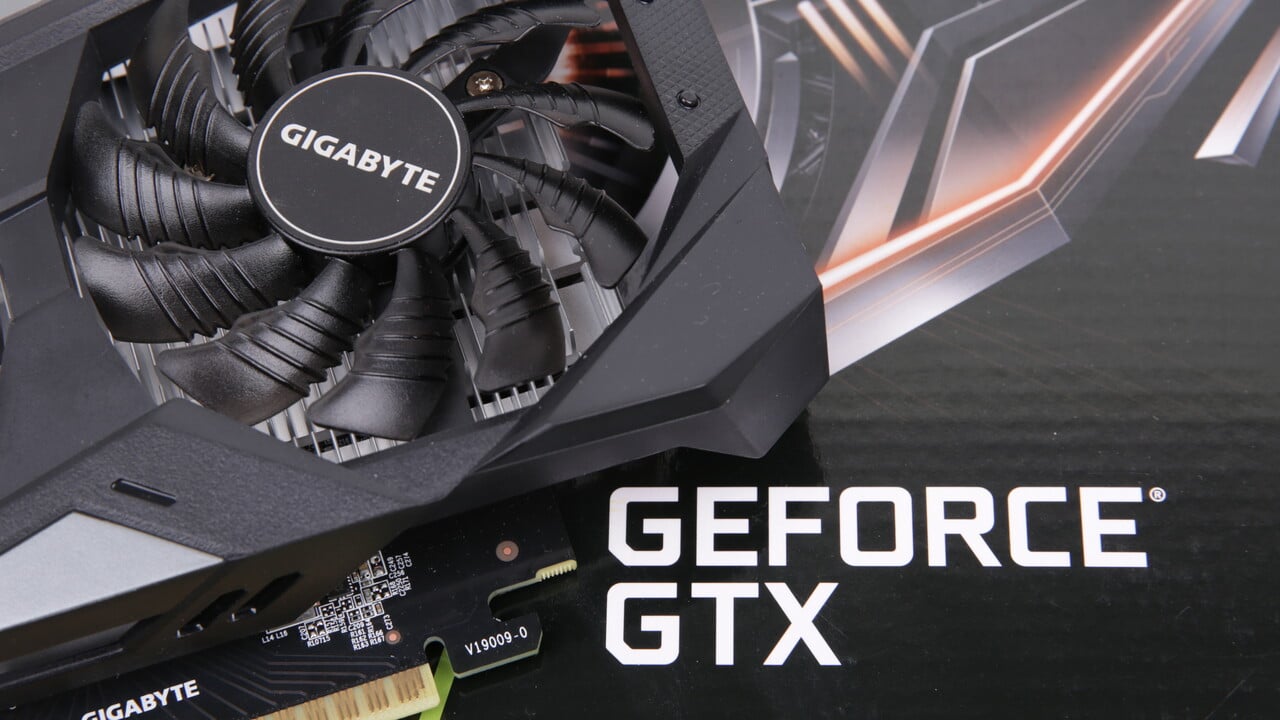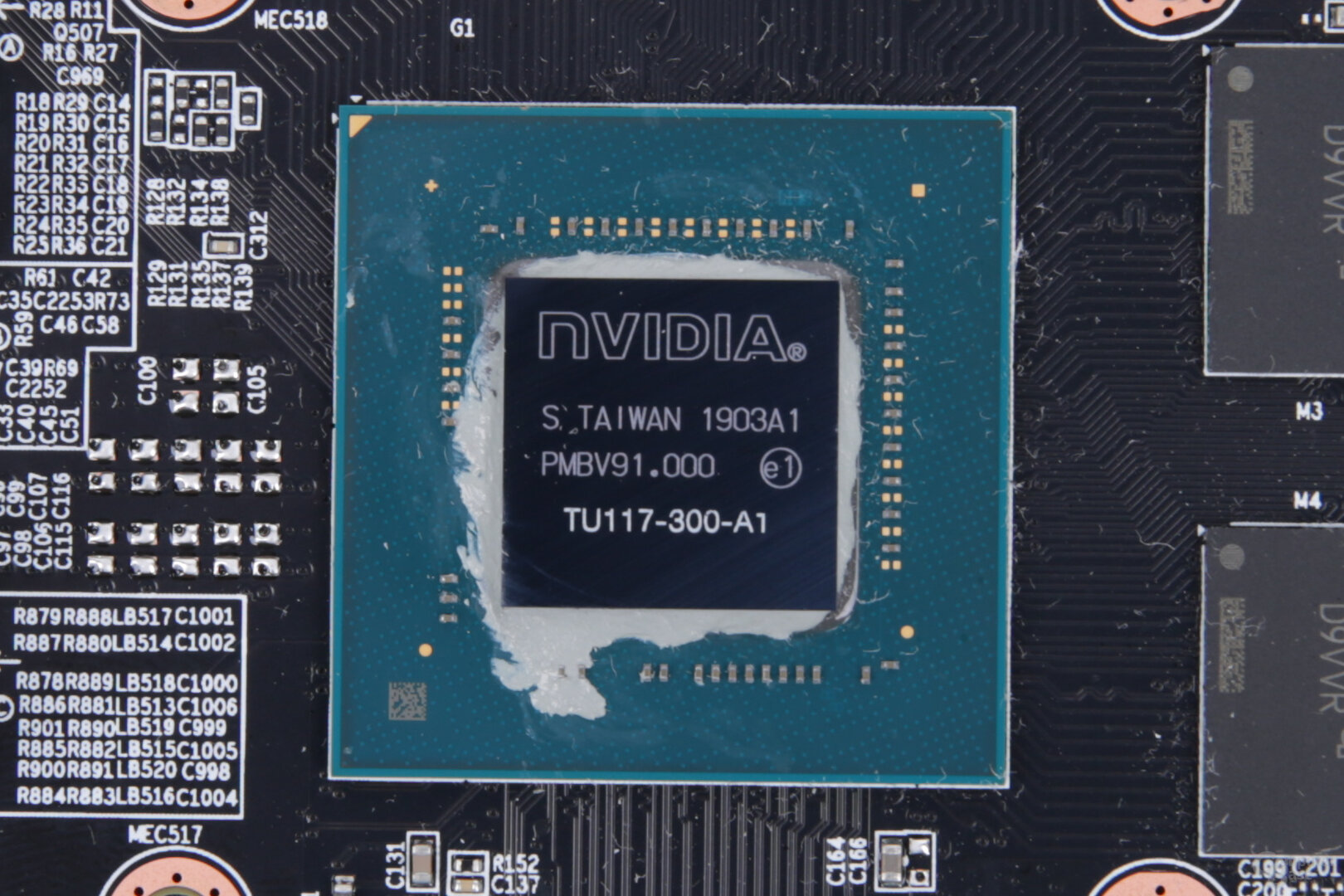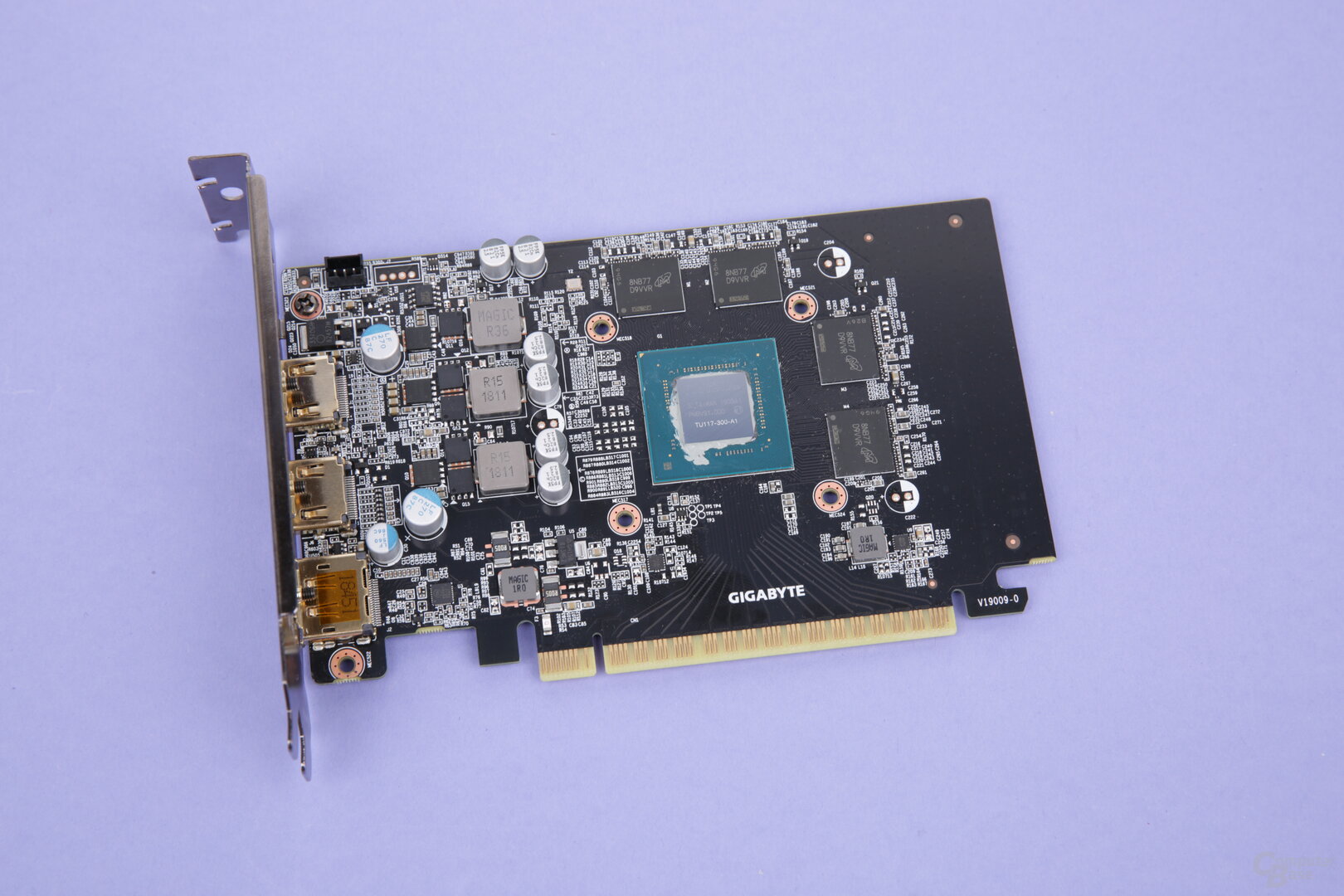– The GeForce GTX 1650 is the cheapest Turing model for the time being. BitcoinMinersHashrate has tested two Gigabyte models. The graphics card is very energy efficient, but in terms of performance it is not enough to catch up with AMD's Radeon RX 570. And the competition is cheaper too.
Nvidia's Turing architecture recently targeted the 200-euro mark with the GeForce GTX 1660 for around 220 euros, but the Radeon RX 570 and Radeon RX 580 still competed against the Turing predecessor Pascal in their price segment. That has now changed, because the GeForce GTX 1650 replaces the GeForce GTX 1050 and the GeForce GTX 1050 Ti and is available from 149 euros.
The GeForce GTX 1650 is aimed at gamers who want to keep the Full HD resolution and are ready to reduce the level of detail in AAA games. With the graphics card, Nvidia also has its sights set on numerous casual and esports games such as Apex, Fortnite and Overwatch. In order for the project to succeed, the GeForce developers put on the TU117, another GPU with Turing technology, but "without RTX" and pair the model with a 4 GB GDDR5 memory. The test will show whether this is enough to set itself apart from the predecessor and put on the Radeon RX 570.
The editors had two models from Gigabyte available for the test. The GeForce GTX 1650 OC is an entry-level model that almost adheres to the specifications of Nvidia. The GeForce GTX 1650 Gaming OC, on the other hand, comes with a larger cooler and higher clock rates and can also consume more electrical power.
The TU117 as the smallest Turing without RTX and with GDDR5
The TU116 of the GeForce GTX 1660 (Ti) is still a relatively large GPU with 284 mm² – and probably simply too expensive for the GeForce GTX 1650. The TU117 used there is again a good deal smaller at 200 mm², although again significantly larger than the direct predecessor GP107, which only has 132 mm². There are, however, significantly more circuits with 4.7 billion transistors (3.3 billion on the GP107).
Technically, the TU117 and TU116 are identical, but around a third of all units are missing. There are 16 streaming multiprocessors (SMs) left on the GPU, which corresponds to 1,024 shader units and 64 TMUs. However, the GeForce GTX 1650 is not yet the full version of the TU117 – this is reserved for a possible GeForce GTX 1650 Ti. With the GeForce GTX 1650, two SMs are switched off and 896 ALUs and 56 TMUs are still active.
The number of ROPs has also been reduced. Instead of 48, there are 32 ROPs on the TU117, all of which are active. And the memory interface is also smaller. Four 32-bit controllers are left, which corresponds to a 128-bit interface. The GeForce GTX 1650 has a memory capacity of 4,096 MB of the GDDR5 type.
Nvidia provides a base clock of 1,485 MHz for the Turing entry, the average Turbo clock should be 1,665 MHz. The TDP is officially 75 watts. Models with a reference clock therefore do not need a separate PCIe power connector, but models with a higher clock do.
The Gigabyte GeForce GTX 1650 (Gaming) OC in detail
Gigabyte sends four different models of the GeForce GTX 1650 into the race. The GeForce GTX 1650 OC and thus Gigabyte's entry-level model in normal size are in the test. The card is currently available from 170 euros. The GeForce GTX 1650 Gaming OC is also the top model. At least 185 euros have to be paid for this.
The GeForce GTX 1650 OC in detail
The GeForce GTX 1650 OC has a length of 19.5 cm. This makes the graphics card small, but there is an even shorter model from Gigabyte. At 15.5 cm, the PCB itself is even shorter than the graphics card with the cooling system. The graphics card is equipped with a simple cooler, which consists of a simple aluminum heat sink with some coarse fins. In addition, two axial fans with a diameter of 75 mm provide the necessary fresh air. These switch off on the Windows desktop. The starting speed is somewhat uncomfortable, however, because with 2,800 revolutions the fans give audible full throttle before the speed is reduced.
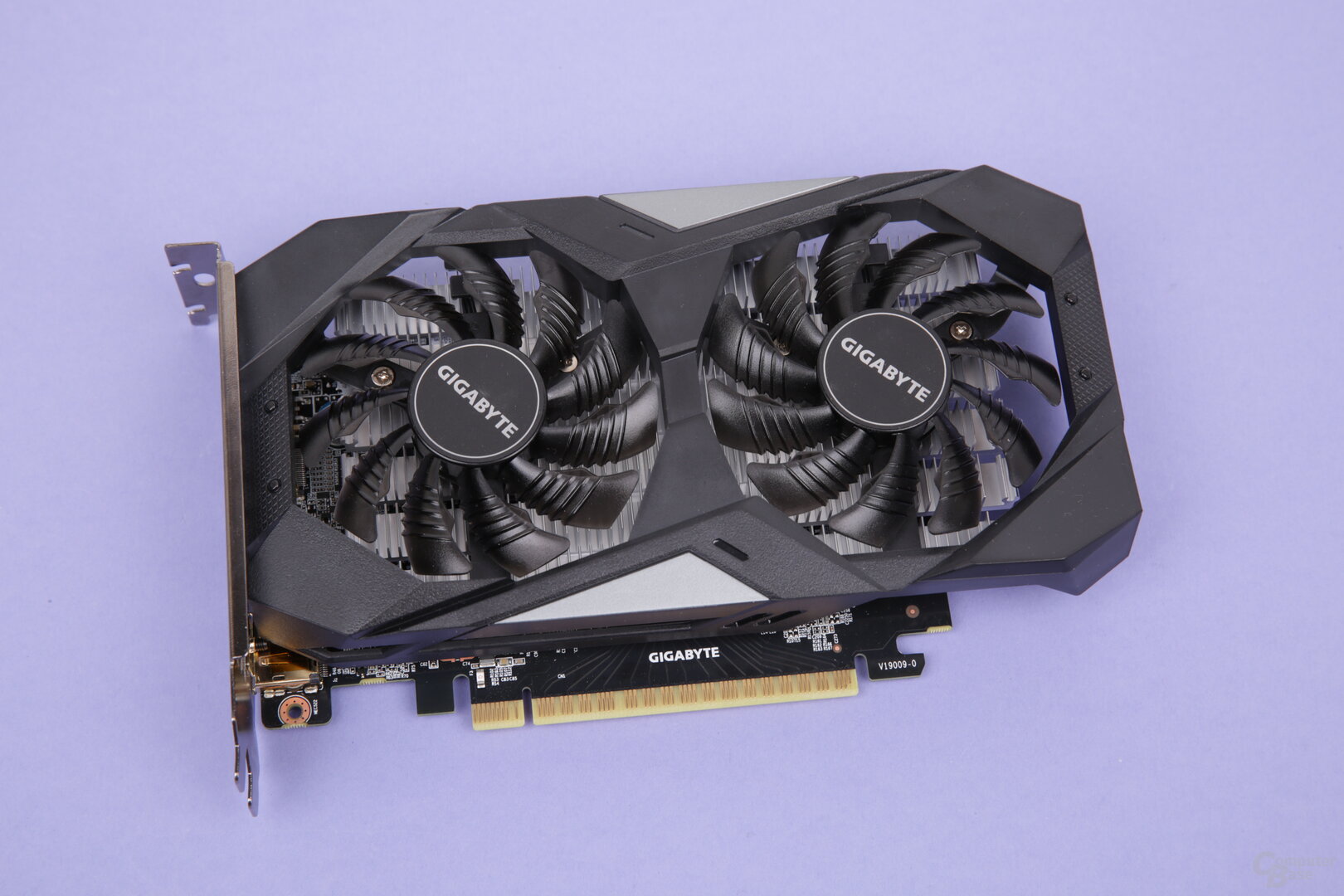
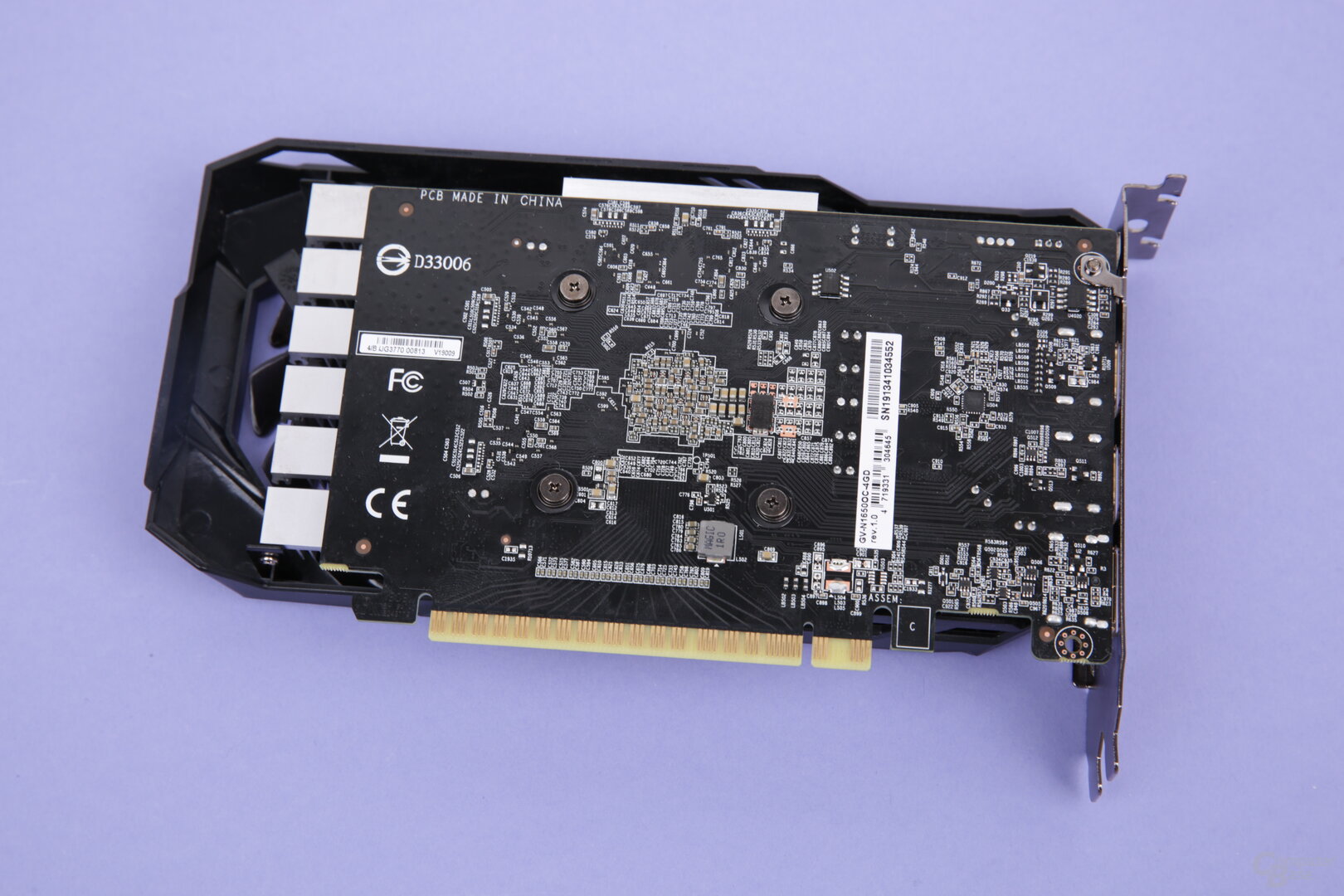
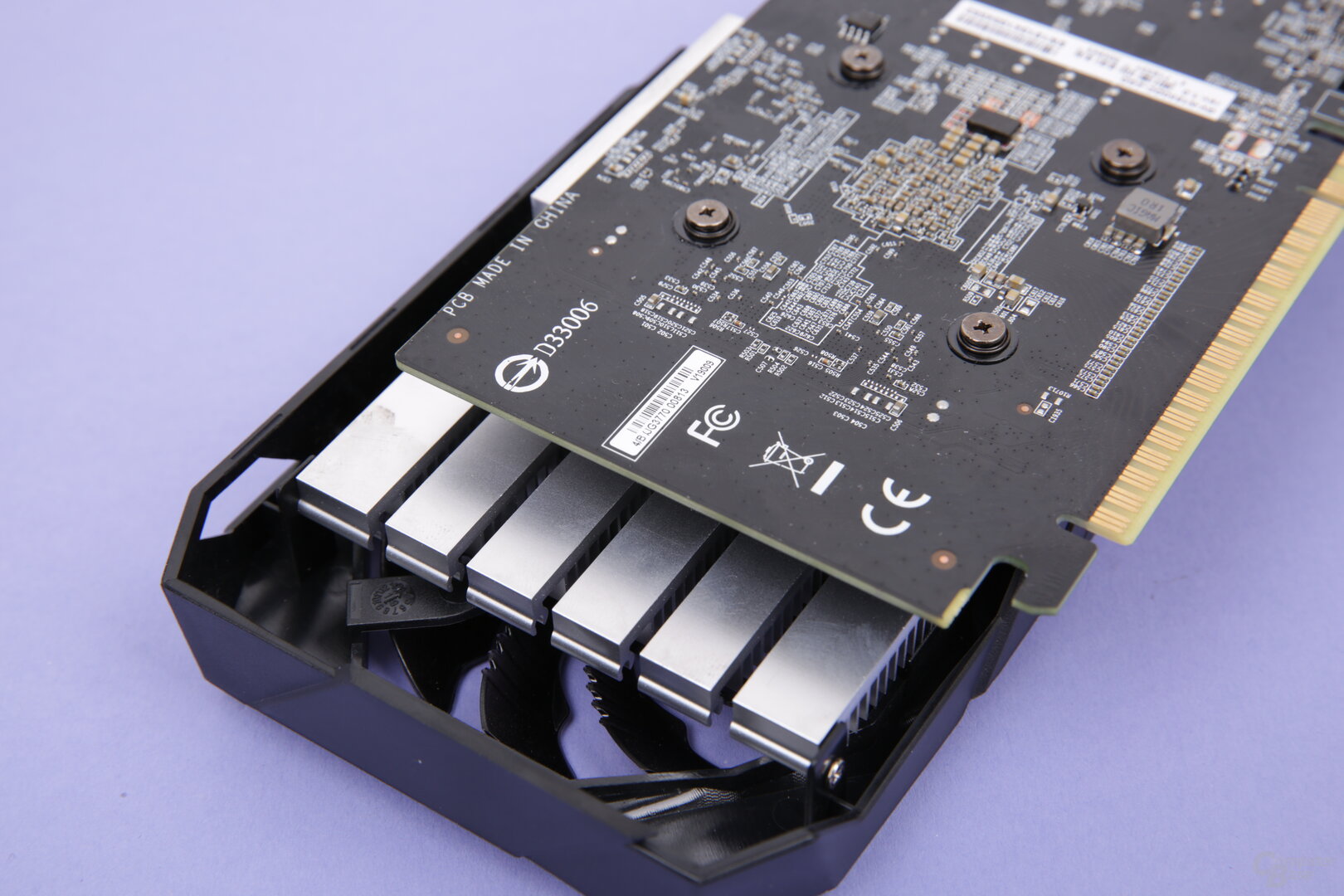
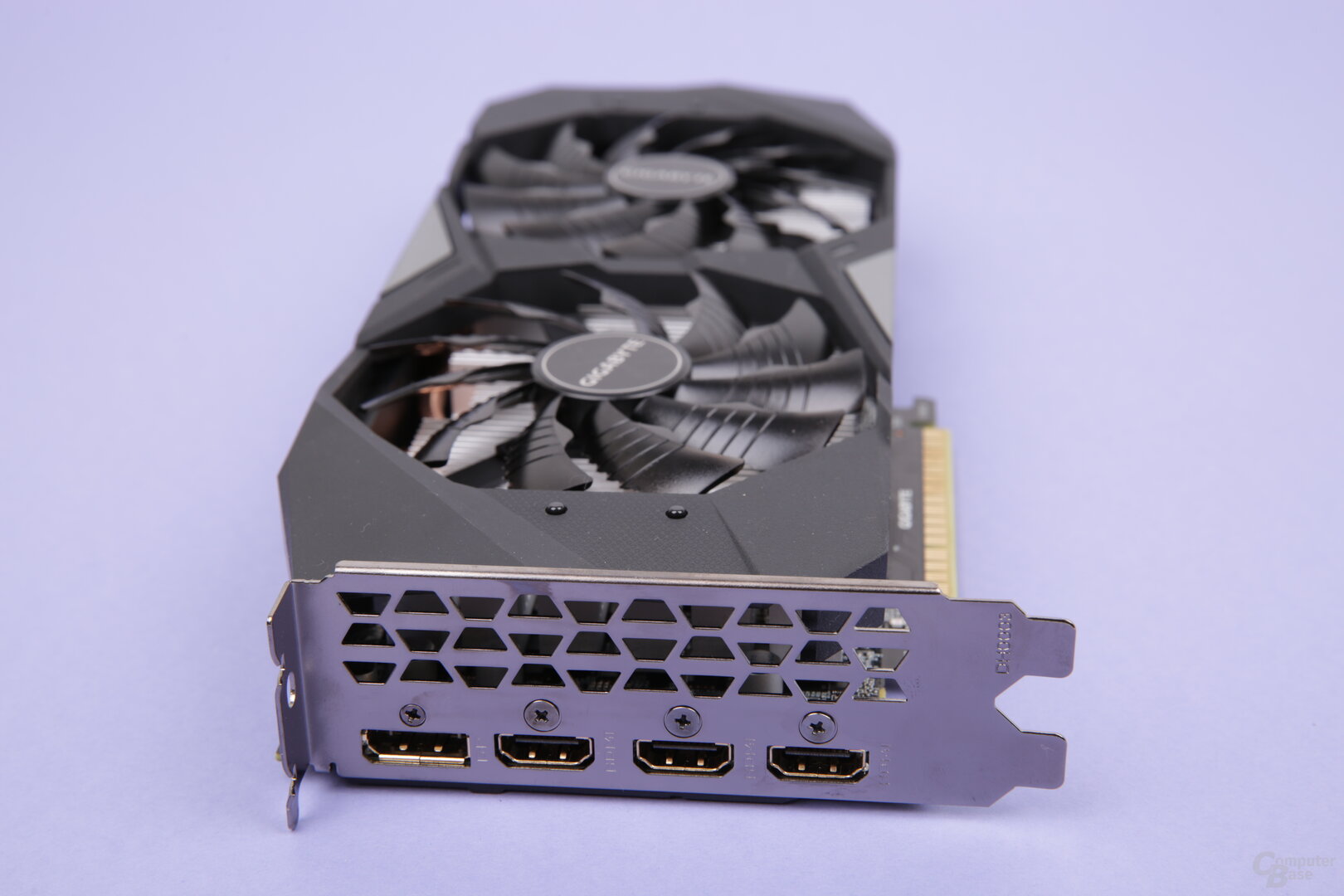
Gigabyte has slightly overclocked the graphics card. The base clock of the GeForce GTX 1650 OC is 1.485 MHz, the average Turbo clock is 1.710 MHz. That is 45 MHz more than Nvidia provides. The 4,096 MB GDDR5 memory works with the normal 4,000 MHz. At the TDP, Gigabyte still adheres to the recommendations. The graphics card is allowed a maximum of 75 watts, there is no power connection. In addition, the power target cannot be expanded manually.
The GeForce GTX 1650 Gaming OC in detail
The GeForce GTX 1650 Gaming OC is significantly larger with a length of just under 27 cm. The Gaming OC also has a longer and more complex PCB and significantly more cooling surface. The cooler itself is also more complex. The basic construct is identical with more space, but there are two heat pipes and a backplate. The two axial fans are also larger with a diameter of 95 mm. On a positive note, the starting speed of the fans on the “flagship” is much more pleasant at 1,250 revolutions.
The base clock of the GeForce GTX 1650 Gaming OC is again at 1.485 MHz, but Gigabyte indicates a higher turbo frequency at 1.815 MHz. The TDP is still only 75 watts. There is a six-pin power connector and, unlike the smaller version, the power target can be increased to 105 watts. The potential for overclocking is therefore significantly greater.
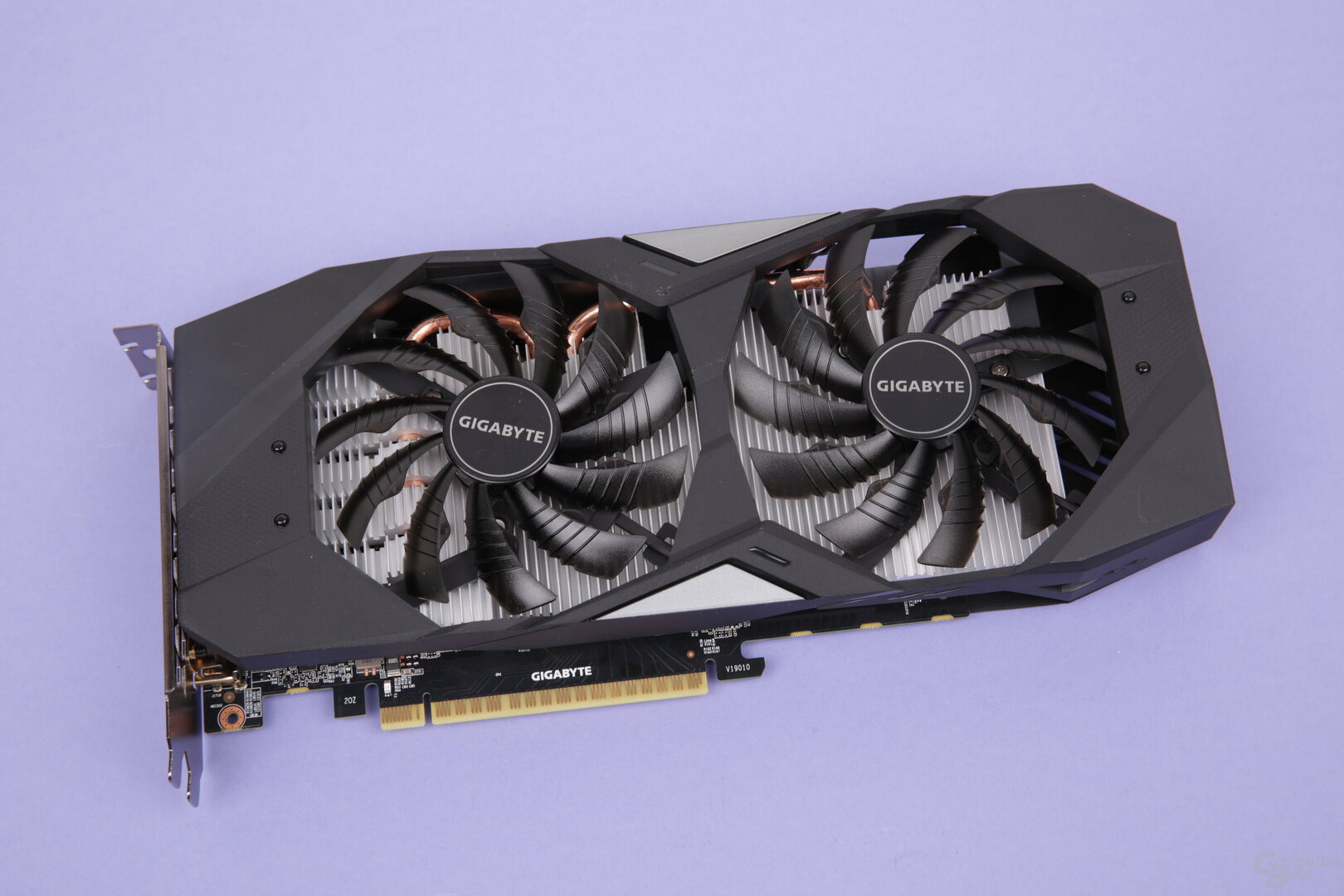
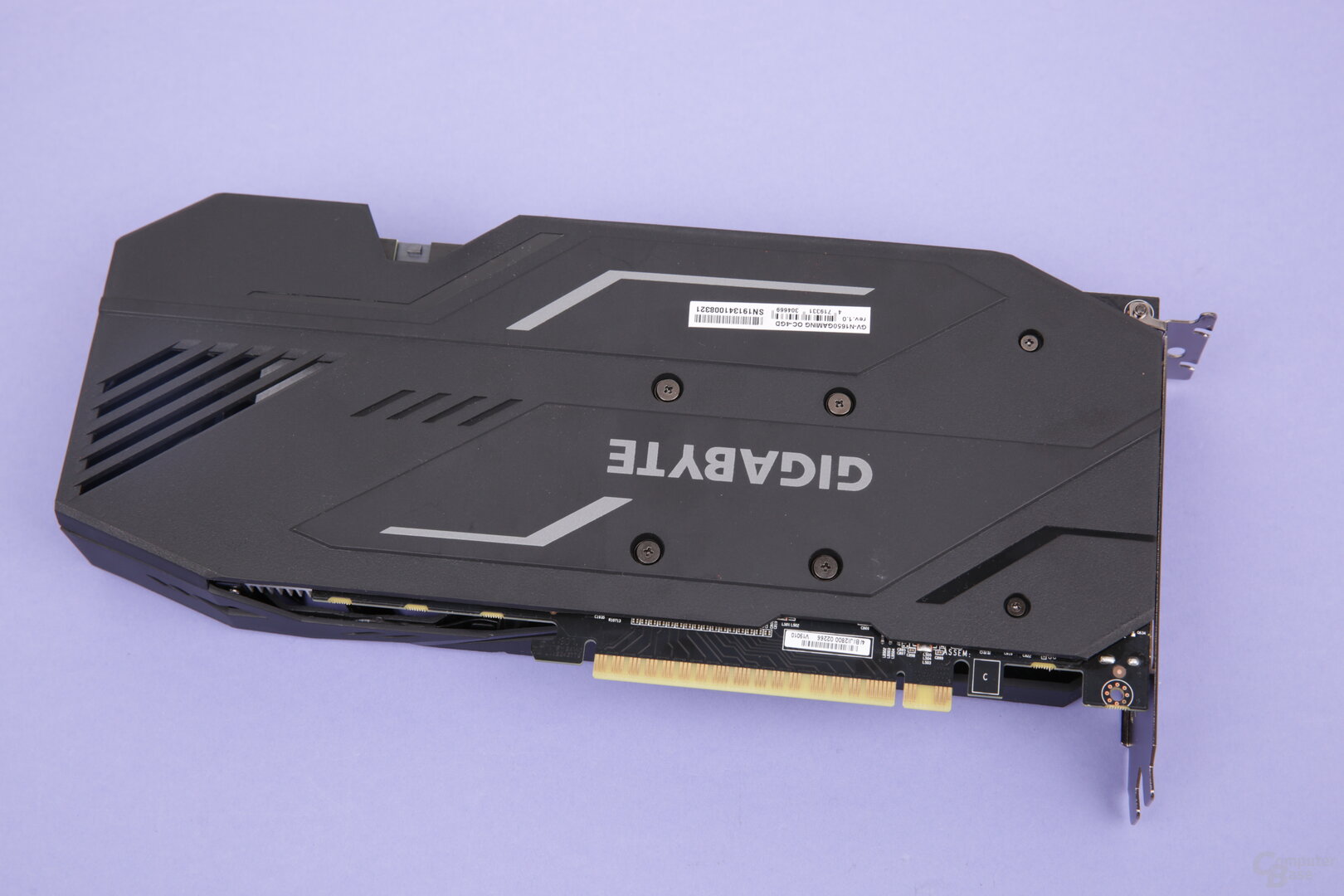
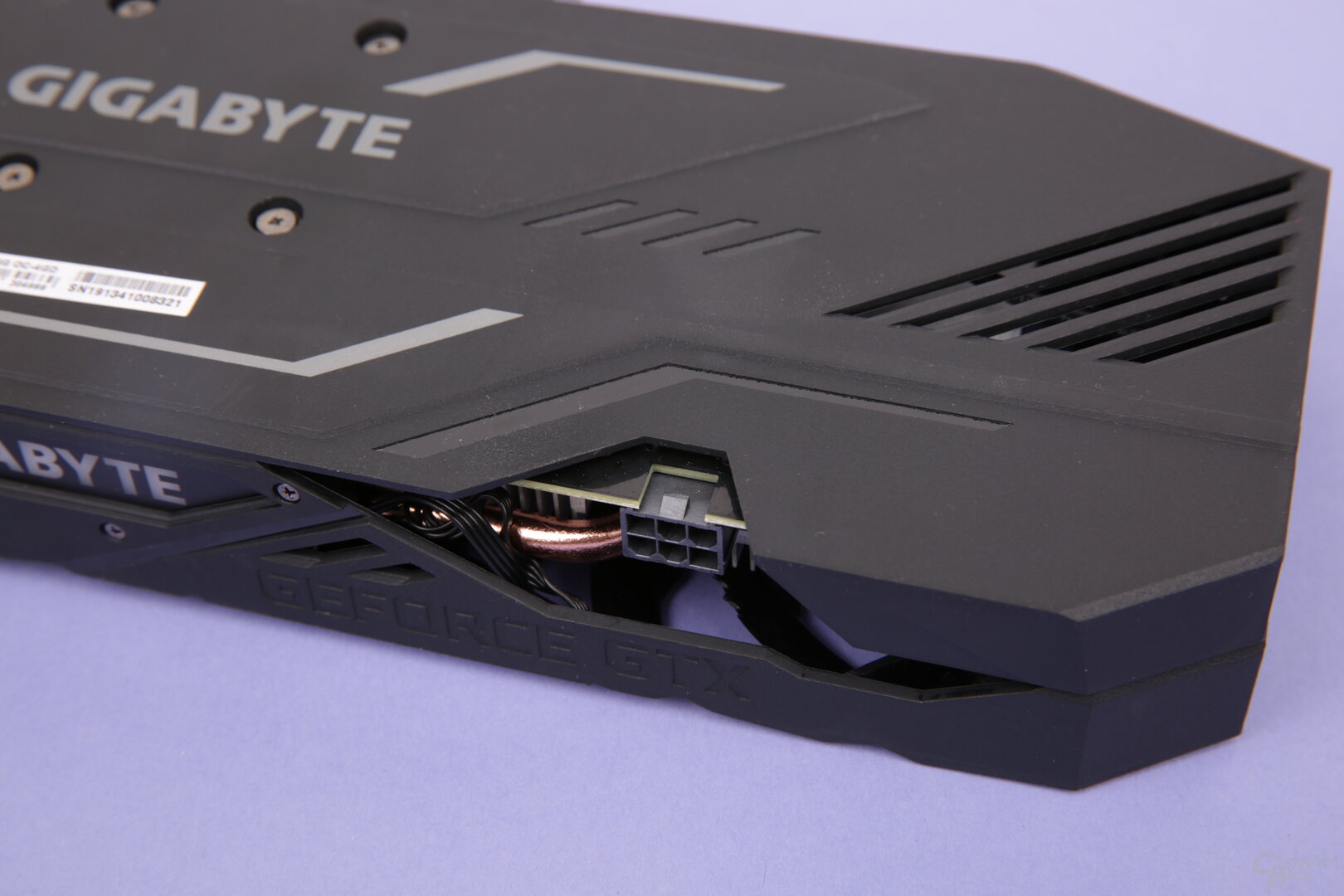
In addition, the GeForce GTX 1650 Gaming OC offers RGB lighting. However, this is only the Gigabyte lettering on the cooler side, which can shine in different colors and patterns.
The actual clock rates under load
Like the other Turing models from Nvidia, the Turing-GPU TU117 is equipped with GPU-Boost in version 4.0. The new Turbo now uses two temperature targets (TT) instead of one. If the TT was reached on Pascal, the graphics card immediately clocked down to the base clock and then "recovered" again within the limit. If the first TT (83 ° C) is reached on Turing with GPU Boost 4.0, the GPU now clocks down to the base clock and not to the base clock. Only when the second TT (85 ° C) is reached is the basic cycle. Nvidia wants to reduce the performance loss caused by poor GPU or case cooling.
The temperature targets can also be influenced more precisely with GPU Boost 4.0. For example, you can configure that the temperature should be completely ignored – at least until a certain uncontrollable temperature is reached and the GPU is the last lifeline to clock down. If the temperature is not limited, GPU Boost 3.0 and 4.0 behave exactly the same again.
The Turing GPU has a maximum clock, which is available at low temperatures and low load. This varies from graphics card to graphics card. The frequency is automatically reduced at higher temperatures and GPU load.
There are the same limits as with Pascal
The graphics card works at this frequency if a certain budget for power consumption (75 watts in both tested Gigabyte models of the GeForce GTX 1650) and temperature (83 ° C) is not exceeded. Otherwise the frequency will be reduced until the limits are met again. The temperature target can be raised to a maximum of 90 degrees Celsius in both models. The power target can be raised to 105 watts on the GeForce GTX 1650 Gaming OC, but not at all on the GeForce GTX 1650 OC.
What is striking about Turing: The GPUs change the clock in 15 MHz steps and work comparatively evenly, while AMD's Vega GPU changes the clock at high frequency.
If the clock can work indefinitely, the maximum frequency of the GeForce GTX 1650 OC in games is 1,860 MHz. In the five titles tested, the Gigabyte graphics card only rarely achieved this, since the power target intervenes, but only moderately reduces the clock. 1,815 MHz in Far Cry 5 is the lowest frequency, usually the clock is a bit higher.
The GeForce GTX 1650 Gaming OC does not work 100 MHz faster. 1,935 MHz is the maximum possible in games that the graphics card also reaches in places in all titles. This shows that the power target, which is 75 watts in both cases, has only a minor influence on the clock rate. Kingdom Come: Deliverance is between 1,905 MHz and 1,935 MHz. This is the lowest measure in the test.
The GeForce GTX 1650 overclocked
BitcoinMinersHashrate used the Gigabyte GeForce GTX 1650 Gaming OC for overclocking because the graphics card's power limit can be increased from 75 watts to 105 watts. The TU117 GPU allows a frequency that is 106 MHz higher before the first crashes occur. The average Turbo clock is 1,921 MHz and in games the graphics card works at just over 2,000 MHz.
The 4,096 MB GDDR5 memory has a much greater potential. This can be overclocked by 850 MHz, so that the frequency is 4,850 MHz, which is just below the level of the GDDR5X memory with 5,000 MHz.
The "GeForce GTX 1650 @ OC" works so quickly
On the next page, the graphics card titled "GeForce GTX 1650 @ OC" works accordingly with a power limit of 105 watts, a base clock of 1,591 MHz, an average turbo clock of 1,921 MHz and a memory clock of 4,850 MHz.
On the next page: benchmarks, volume, consumption and conclusion




